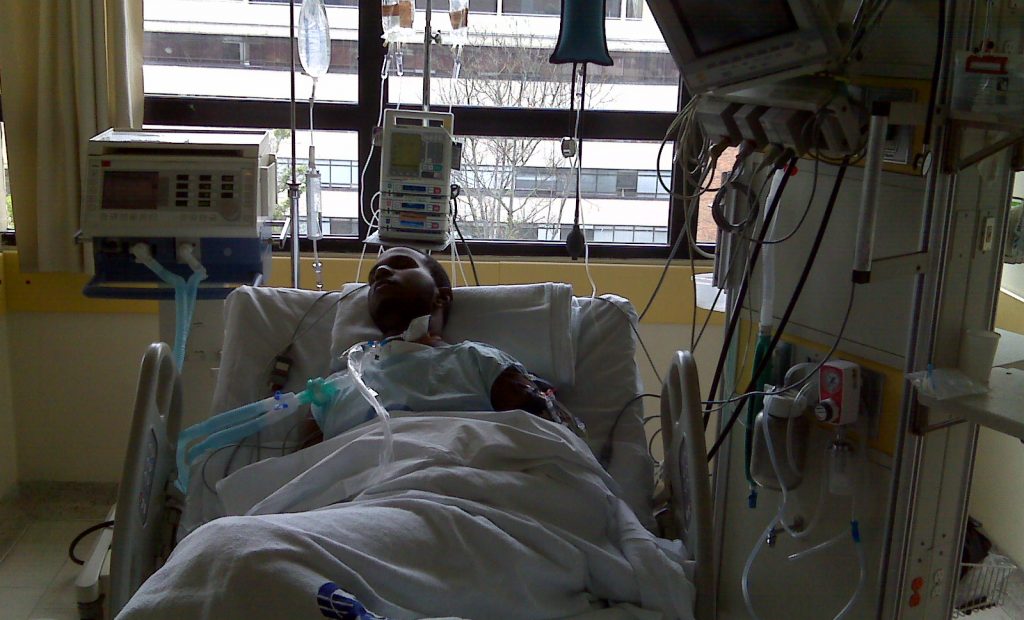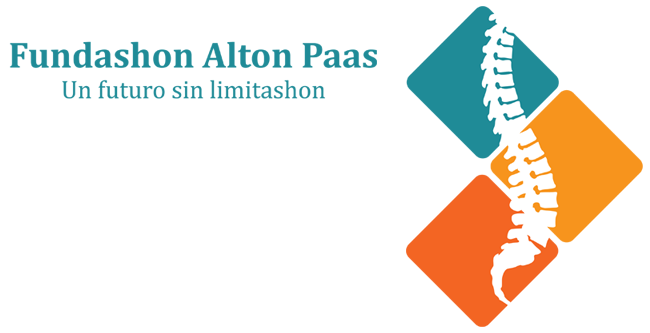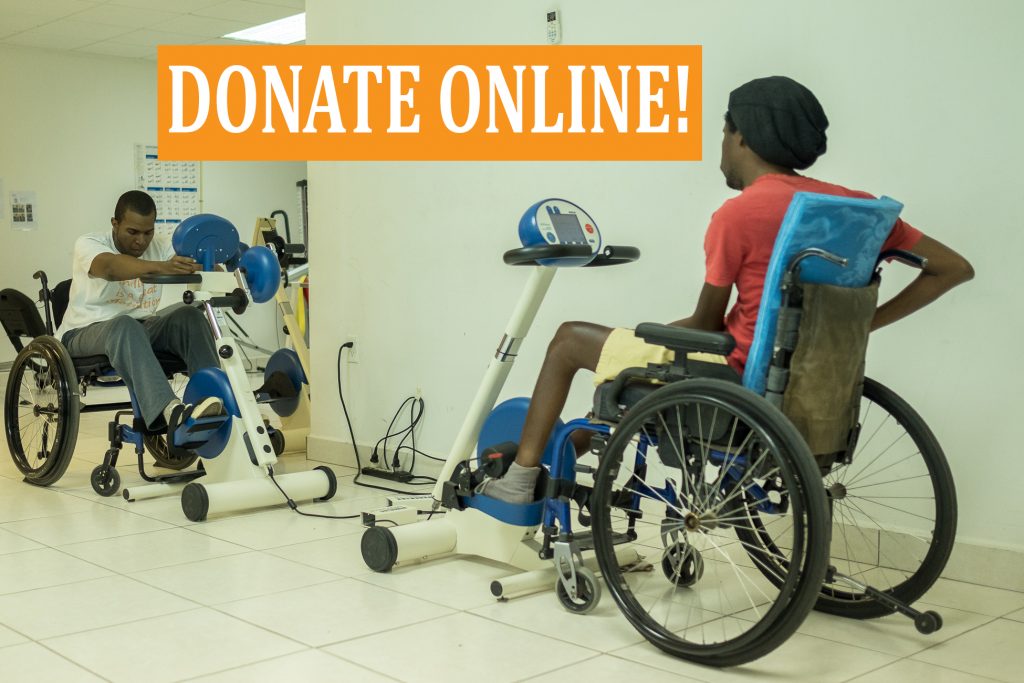
As an organization, we talk a lot about spinal cord injuries. Our mission, our work, is dedicated primarily to people with such an injury. But most of the time, people don’t really know what a spinal cord injury is or how devastating it can be. Even the international symbol for disability resembles a man with paraplegia in a wheelchair. However, a spinal cord injury is even worse than what that symbol depicts. It is particularly devastating for two reasons; first, because it strikes out of the blue, without any warning and secondly, because it comes with a variety of complications.
That is why we want to share more information about what a spinal cord injury truly is; what makes it so devastating as well as some data about spinal cord injury in Curaçao.
A Spinal Cord Injury or ‘Dwarslaesie’ in Dutch, is damage to the spinal cord within the backbone/spinal column, that blocks any messages from the brain coming from, or going to the rest of the body. Because of no communication below the area of the injury, the muscles and/or organs, depending on the location of the injury, cannot voluntary move or feel anything. The higher the site of the injury, the more areas of the body lose their function. The lower the site of the injury, the less areas of the body lose their function. Most of the damages to the spinal cord are caused by traumatic injuries such as:
- Car accidents
- Extreme sports
- Violence (gunshot or stabbing injuries)

Another way people can obtain damage to their spinal cord is through non-traumatic injuries such as:
- Tumors
- Infections to the spinal column
- Hernia
There are also two categories of injury; a complete or an incomplete injury.
When you have a complete spinal cord injury, it means that there is no communication whatsoever below the site of the injury. The spinal cord has been completely cut through and separated. If it weren’t for the person’s eyes, he wouldn’t know he has the rest of his body. He cannot feel anything or move anyting below the site of the injury; what we call paralysis. With an incomplete spinal cord injury there is still some communication left. There is clearly some damage on the spinal cord but the person can still feel or move one or more parts below the site of the injury. So, it all depends on the location of the injury and whether it’s a complete or incomplete injury. That’s what determines how much work the person must do to recover or compensate with assistive devices/equipment to still have a good quality of life.
The spinal cord has been completely cut through and separated. If it weren’t for the person’s eyes, he wouldn’t know he has the rest of his body. He cannot feel anything or move anyting below the site of the injury; what we call paralysis. With an incomplete spinal cord injury there is still some communication left. There is clearly some damage on the spinal cord but the person can still feel or move one or more parts below the site of the injury. So, it all depends on the location of the injury and whether it’s a complete or incomplete injury. That’s what determines how much work the person must do to recover or compensate with assistive devices/equipment to still have a good quality of life.
The injury in itself isn’t the devastating part; it is the non-communication between the brain and the body which prevents the body from working properly. Growing up, our body develops and at some point, starts to do most things naturally or on auto pilot, such as breathing, regulating blood pressure, emptying the bladder, reacting when feeling pain and so on. When there is no communication, the brain doesn’t get the message when the bladder is full and neither does the bladder get the instruction when to empty itself. Which is why, after a spinal cord injury, there are all these different specialists that need to evaluate the condition of the body to establish what has to be done to help the body function optimally. Because paralysis is not only about the muscles (the arms, legs, core) but also about the internal functions and the loss of sensation. Some of the short-term complications that can arise are:
- Lack of bladder control
- Lack of bowel control
- Breathing (depending on location of injury)
- Pain
- Regulating of blood pressure
After getting an injury to the spinal cord, a person goes to the hospital and depending on the location of the injury and how the person recovers, he is sent to a rehabilitation center for exercise and to prepare to go back home and to his job/school. As soon as he is finished with his rehabilitation, he is sent home. Some of the complications that can occur after those phases are:
- Spasms (involuntary movements)
- Blood circulation problems
- Lung infections
- Urinary tract infections
- Pressure sores
- Muscle stiffness
When the mind cannot communicate with the body to perform necessary task to maintain itself,  assistive tools are required to compensate for the muscles and/or organs such as:
assistive tools are required to compensate for the muscles and/or organs such as:
- Wheelchair
- Urine catheter
- tracheostomy (Depending on location of injury)
- Diaper
- Medication
Despite listing all the possible complications a person can suffer from or the assistive devices someone might use, everyone is different. There can be two people with the same injury and yet, one might be able to use his legs better than his arms while the other one can use his arms better than his legs. It can always be different.
In Curacao the 3 most causes of SCI are:
- Car accidents
- Falling accidents
- Diving accidents
Most people that gets a spinal cord injury in Curacao goes to ‘Revalidatie Centrum Curacao’ for rehabilitation and we are receiving per year data of how many people get treated with spinal cord injury at the rehabilitation center here in Curacao. The data shows that there is an average of 30 people per year between 2011 and 2015.
Because these numbers are only from the new cases that went to rehabilitation, we know there is more due to other circumstances that a person didn’t make it or did not need rehabilitation such as:
- Death
- Rehabilitation process finished during hospitalization
- Send abroad for treatment
- Still recovering from accident or receiving treatment in hospital
- Due to brain damage cannot rehabilitate
There is also a new issue coming forward related to raising the risk of having a spinal cord injury is what is called a cervical canal stenosis. That is a narrowing of the space within the spinal column that any small incidents that for a person without a cervical canal stenosis would be normal, a person with it can get a spinal cord injury from it. There will be an investigation on this matter to understand better why there is more people on Curacao with this condition and how to go about it to treat it as we were informed by the neurosurgeon here in Curacao by the name Dr Ellianne Dos Santos Rubio.
Because we understand all the impact this devastating injury has on a person’s life we want to help and get this person back on track with his/her life. Either through exercise, social events and more. You can help as well by becoming a monthly donor. You can give someone the opportunity to believe that life can get better after a spinal cord injury. Donate Today Here!

